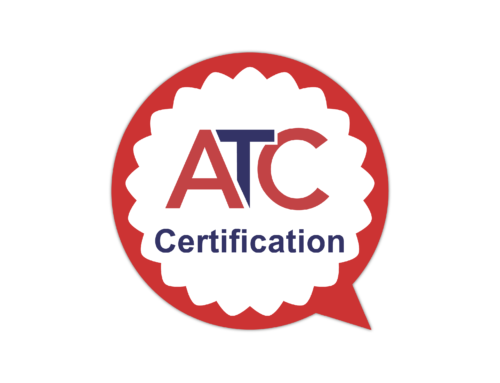
Karen Curtis’ MA Dissertation from the University of Surrey focuses on the potential value of ISO 20771 on legal translation, specifically for the UK’s legal translation market.
The ATC’s CEO Raisa McNab welcomes the dissertation, “Karen’s research, initiated as part of the ATC’s Collaborative MA Projects, is an important first look into the potential applications of ISO 20771 in the UK market, where no state-authorised or sworn translator system exists.”
“ISO 20771 Legal Translation is the only ISO standard for language services specifically aimed at individual legal translators, but Karen’s early findings indicate that there is clearly also scope for a collaborative application of the standard between language service companies and their in-house and freelance legal translators – for example, via ATC Certification’s 20771 Collaborative Certification Scheme.”
Dissertation summary
ISO 20771:2020 (Legal Translation – Requirements) was published in April 2020 and has been adopted in the UK by the British Standards Institution. It is the first specialist translation standard and the first standard for individual translators.
Germany made headline industry news when its national standards organisation repudiated ISO 20771, but Germany operates a sworn translation system and therefore has a different structure to the unregulated UK translation industry. There are arguments that as many legal documents require an exceptional range of translation knowledge and skills, higher standards should be expected for legal translation and that ISO 20771 is an important aid in this regard.
The conundrum
As adoption of ISO standards is voluntary, ISO standards rely on their relevance for widespread use. This research, however, indicates that ISO 20771 faces a significant challenge. On the one hand, ISO requires its standards to be “easily accessible and usable” and wants people to understand their benefits (ISO website, 2021). On the other hand, ISO 20771’s project leader states that ISO 20771 “is considered to be a high standard and a difficult one to conform to” (Popiolek, 2021).
Summarised below are the results of the dissertation research – which includes interviews with six UK-based freelance legal translators and a representative of a legal specialist Language Services Provider (LSP) – on ISO 20771’s accessibility, usability, and the comprehensibility of its benefits.
- Accessibility
✔ The LSP views ISO 20771 as a valuable marketing tool for accessing new clients.
✔ LSPs seeking collaborative certification can be audited for ISO 17100 and ISO 20771 at the same time, thereby saving costs and making multiple accreditations more accessible.
✘ As a publication, ISO 20771 is expensive to purchase and not readily available otherwise (the exception being that ATC members have access to it).
✘ As ISO 20771 has high requirements, gaining certification to ISO 20771 is most accessible to top level legal translators. Experienced legal translators, however, are in demand and therefore may have well-established client bases and little incentive to apply for certification.
✘ The cost of applying for certification is likely to be prohibitive for newer entrants, the very ones who may benefit most from increasing their profile via ISO 20771.
✘ Translators without a degree are excluded from applying for certification to ISO 20771.
- Usability
✔ Certification may help clients identify competent legal translators.
✔ Section 6.3.1 of ISO 20771 obliges certified translators to only accept work within their competence, thereby providing protection for clients.
✘ Section 6.5 of ISO 20771 obliges the translator to ensure that the whole document is revised by a competent and qualified reviser (unless otherwise agreed in writing by the client). Accordingly, certification to ISO 20771 may not be practicable for a translator who does not regularly translate texts which justify revision.
✘ It may not be possible to adhere to ISO 20771’s revision requirements when working with agencies, as the translator may not have control over selection of a suitable reviser.
- Understanding the benefits of ISO translation standards
✔ The LSP views ISO accreditations as positive marketing tools.
✔ It was mooted that high-end agencies and more informed clients may look for translators certified to ISO 20771 in the future.
✘ However, it is currently unclear whether clients do seek out translators with ISO accreditations and/or whether they appreciate their significance.
✘ It is unclear whether individual translators will benefit financially from investing in certification to ISO 20771.
Conclusion
The value of ISO 20771 for the UK differs according to the role of the participant. The LSP ascribed value to ISO 20771 as a marketing asset, whereas the individual translators viewed certification costs as onerous and were unconvinced about a return on investment. Thus, although ISO 20771 is intended for individuals, it is more accessible for LSPs seeking collaborative certification for its translators. If few translators apply for certification, this negates one of the potential benefits of ISO 20771, namely that certification could offer a practical way for clients to identify suitably competent translators.
About the author
Karen Curtis recently completed an MA in Translation with Distinction at the University of Surrey, adding to her BA (Hons) in German & Management Studies, law qualifications and RHS Level 2 Certificate in Horticulture. Karen has previously worked as a solicitor, administrator and in horticulture. You can find her on LinkedIn (www.linkedin.com/in/karen-curtis).
References
View the full dissertation here.
ISO (2021) ISO Strategy 2030. Available at: https://www.iso.org/publication/PUB100364.html.
Popiolek, M (2021) ISO 20771:2020 Legal Translation – Requirements. Industry Standards Demystified – Part 6. Available at: ISO 20771:2020 Legal translation — Requirements – ATA-TCD.com | ATA-TCD.com.






